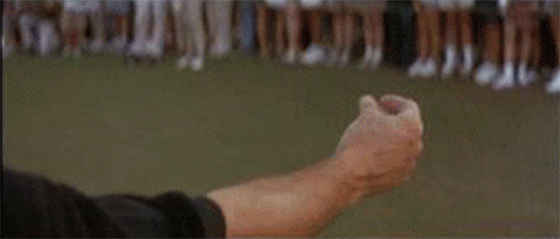The Loop
There's science to prove laying up doesn't pay off
J.B. Holmes found himself in one of golf's most debated and enduring situations on Sunday. A reachable distance away from the green of the par-5 18th hole (which, for him, was 235 yards) with water short, he needed a birdie needed to win the tournament and a par to get into a playoff.
Not fancying the lie -- he said, "It was really on a down slope to the hole and it was just a lie that my tendency is to hit it a little bit further and hit a draw and long and left is dead" -- Holmes opted to lay up. His par forced him into four-man playoff which Jason Day won on the second extra hole.
"I had the same thing again, I would lay up," Holmes said after the round.
Naturally, a fiercely spontaneous debate raged on Twitter.
Pete Carroll made wrong decision by being aggressive. A wk later, J.B. Holmes made wrong decision by being conservative. #EasyToSayFromCouch
— Alex Myers (@AlexMyers3) February 8, 2015
JB says downhill lie on 18 in regulation, his tendency is long and left, which is dead. He doesn't regret decision. #noragrets. #scottyp
— Doug Ferguson (@dougferguson405) February 9, 2015
Between Jason Day and JB Holmes there are two pairs of balls, and Jason Day has both of them.
— No Laying Up (@NoLayingUp) February 9, 2015 So, did J.B. Holmes make the right decision? It turns out that anlaytics nerds are working hard on solving the 'when to lay up' question, and on this occasion, the evidence would suggest that J.B. Holmes chose wrong: He should have gone for the green.
According to an article in the December 2013 edition of the the Journal of Quantitative Analysis in Sports, Edmund M. Balsdon, a professor of Economics at San Diego State University, argues that pros should start playing more aggressive under pressure, because tournament purses are heavily skewed in favor of the winner. In other words: Start pin-seeking once you're in contention, because even if you bomb-out a few times, all it takes is one win to make the deal more than worth your while.
One of the reasons why we know this is because we know how pros play when they're under pressure to make the cut. In that scenario, the pros who start playing more aggressively (mainly because they have to) end up with a more volatile scoring average, but also make more cuts -- and therefore more money -- than players who don't alter their game plan. That same principle is in play when the pressure is applied at the top of the leader board, when players tend to get more conservative.
